We loved the wit, creativity, energy, commitment, and choreography by Stephanie Lake. All in about an hour. Nicely done.

The sounds of buzzing electricity coveys human interactions and emotions in the reactions of the dancers.
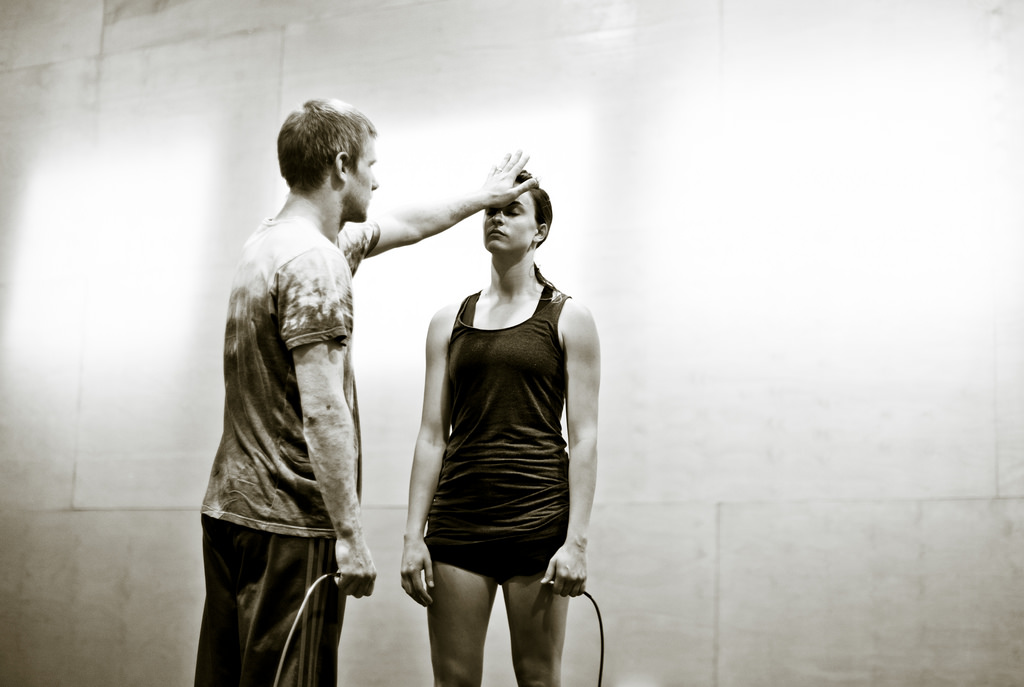
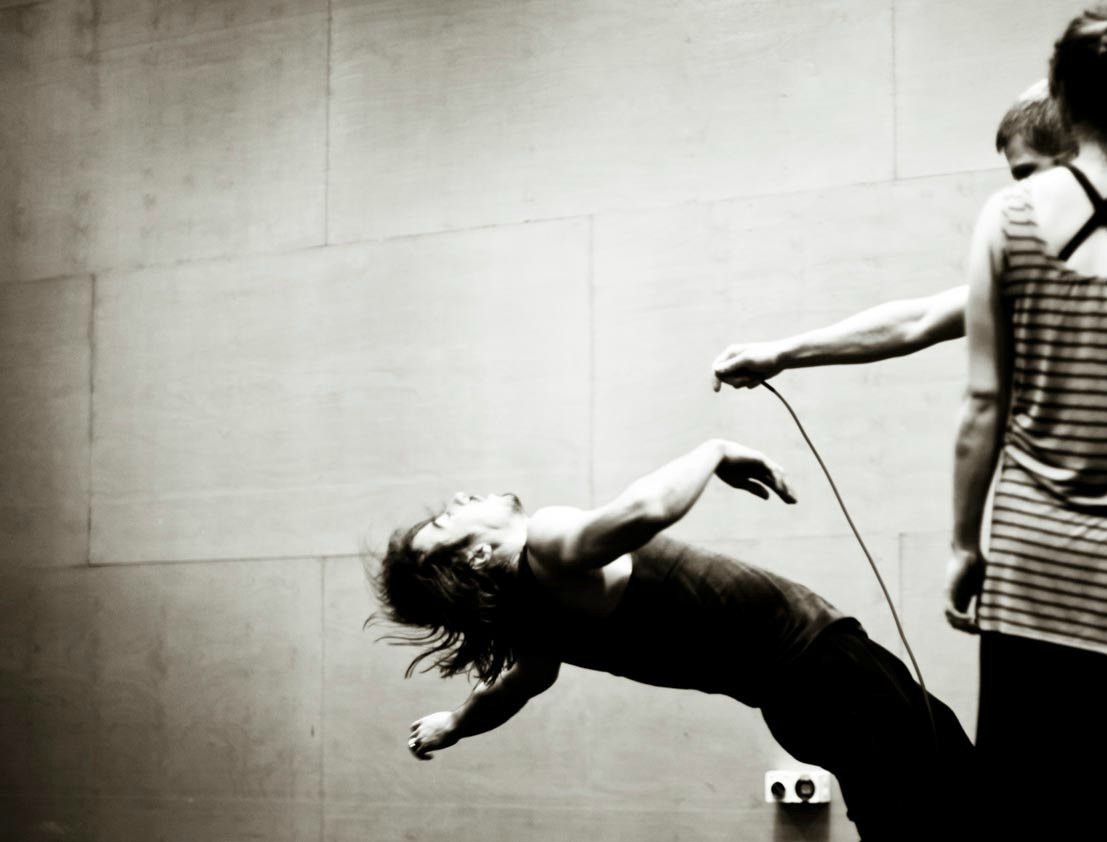
It is divided into segments and it might have been nice to have them named in a program if for no other reason than to allow a viewer to reflect later on what has been seen.
Some of the early segments were intriguing and amusing: they seemed exploratory. The opening segment showed the energy between a young man and a young women, part playful and part serious. It drew in the audience, a full house it seemed in; l leaned forward, and I was not alone.
During one unpleasant segment in the middle, a voice-over said the word ‘experiment’ in a European accent. Moreover, the static sound in this part was taxing to the ears, like the screech many of us would fear in Room 101. (Get it?)
 Stephanie Lake
Stephanie Lake
The closing segment was a reminder of Dr Frankenstein testing the capacity of electricity to bring creatures to life and to bend them to his will.
The press notes say that the choreographer was inspired by the Stanley Milgram experiments of the 1960s, which have been so widely reviled as to enter into the popular culture where all things undergo an alchemical transformation to the simple and sensational.
Download file
Should I suspect that the inspiration was the film ‘The Experimenter’ (2015), which is, well, as they say, based on a true story, and inspired by Milgram’s original studies published in psychological journals culminating in the book ‘Obedience to Authority’ (1974)?
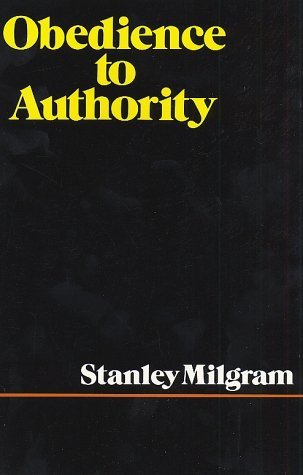
The apparatus to which the dancers were often tethered resembles the film prop. That much is clear.
The Yale University experiments both made Milgram’s reputation and destroyed it.
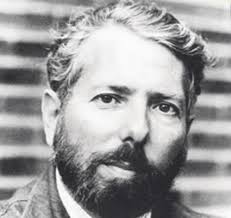 Stanley Milgram
Stanley Milgram
Made it, because he thought they showed the willingness of ordinary men (they all were men) to inflict suffering on other ordinary men at the behest of an authority figure, and so the results have entered the popular consciousness: We all have a little evil torturer within ourselves. In reaction, he became a celebrity social scientist on the talkshow circuit, rubber chicken speaking tour (on which I saw him in flesh), and head-hunted by universities to add glamour to their funding raising.
Destroyed it, because in the inevitable backlash (read envy) there was a competitive rush to find victims of Milgram himself and to feel sorry for them. A number of psychologists concluded that the ordinary men who participated in Milgram’s experiments had suffered anxiety and fear in ostensibly inflicting pain on others. He became a persona non grata and the Olympian American Psychological Association enacted research protocols to prohibit research that might stress subjects.
‘Blind’ and ‘double blind’ have specific meanings in research. In general ‘blind’ means that one person does not know the identity of the other. When the paper I submit to a journal is assessed by editorial readers I do not know their identity; I am blind to their identities. Sometimes they are permitted to know my name on the cover sheet of the submission. That is an example of ‘single blind,’ or ‘blind.’
When the cover sheet is removed and the manuscript is otherwise cleansed of any information that might reveal my identify then the editorial reader does not know my name. Voilà! This is ‘double blind.’
Human ingenuity can find ways to signal identity through this process and well informed editorial readers make their own inferences, but that is the form, which is practiced very generally these days, made easier by digital communication which widens the net at both ends, submissions from around the world which and sent to editorial readers around the world.
In experimental work like Milgram’s ‘blind’ means that the subject does not know that he (I am going to stick with men because they were Milgram’s subjects) does not realise he is the one being studied. These men were told that that the study was about how other persons reacted to them, in that sense they are part of the research team and not themselves subjects. Ha, ha, ha! They are thus ‘blind’ to the purpose. In this context ‘double blind’ would mean that the experimenter also does not know that the subject is the subject, i.e., whether a member of the control or treatment group, for those who know the terminology. This makes sense in some studies and it cancels any prejudice by the experimenter. A quick look at Milgram’s book does not yield a reference to ‘double blind.’
To return to the dance, perhaps ‘double blind’ means not knowing whether one is in charge or is a victim, is master or servant, is boss or employee. Perhaps those who think they are in charge are in fact being themselves manipulated by still others. That those who are running the machine are in fact being run by the machine. That is how Michel Foucault would put it.
Did Milgram prove what he said he had proven? That evil is within every ordinary persons who will blindly follow any authority. Really? Consider the context.
He did the bulk of those experiments while the streets in American cities like New Haven (Yale) and New York (NYU) where he did his studies were often choked with civil rights demonstrators opposing authorities equipped with pressure hoses, attack dogs, automatic weapons, tear gas… need I go on? When the civil rights protestors were recovering from the beatings they suffered at the hands of authorities, the streets were occupied with anti-war protestors opposing the war in Vietnam. Need I go on? In fact, both of these movements preceded his work and he took no notice of either.
Were his subjects everyman? They were those who answered the newspaper ads, and they were single men who wanted the fee for participation, small though it was. Hardly a cross-section of society. Milligram was not a sociologist so there was never any profiling of the subjects. I said ‘men’ above about the early advertisements called for ‘men’ and the wording of the reports in journal articles and in the book is always that. Nothing in the experiments went into differences among the demographic characteristics of the subjects by age, education, sex, occupation, and the like.
There is a very disturbing book about the evil within, and that is Christopher Browning’s ‘Ordinary Men’ (1992) which is a study of an German police battalion in Poland in 1940s implementing the Final Solution. Grim, indeed. But what emerges in the short book is that these were pretty ordinary men even in that terrible situation, and very few of them were zealous murders, but that some were and they were off the leash, while the others looked away. I learned more about evil from Browning’s book than Milgram’s and part of what I learned is that no generalisation works. I also learned that looking away is the reflex. It may be the best one can do.
Yes, I have published on this in ‘Orders and Obedience: Structure and Agency,’ International Journal of Sociology and Social Policy, 26 (2006)7-8, 309-325. Dial it up and be enlightened.
Milgram was a brilliant experimenter and his other studies have long been overshadowed by this series. He himself rather encouraged that, I suppose. But he did many others about crowds and queues all the while observing the Milgram rules made by the gods of the APA.
There is a novel that likewise claims inspiration from Milgram, namely Will Lavender, ‘Obedience’ (2009).
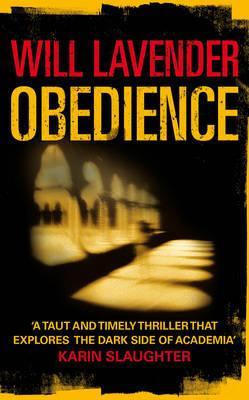
I liked reading it but the line to Milgram was tenuous.
Skip to content
